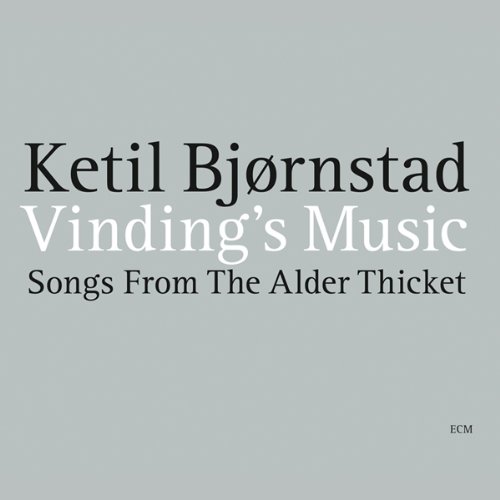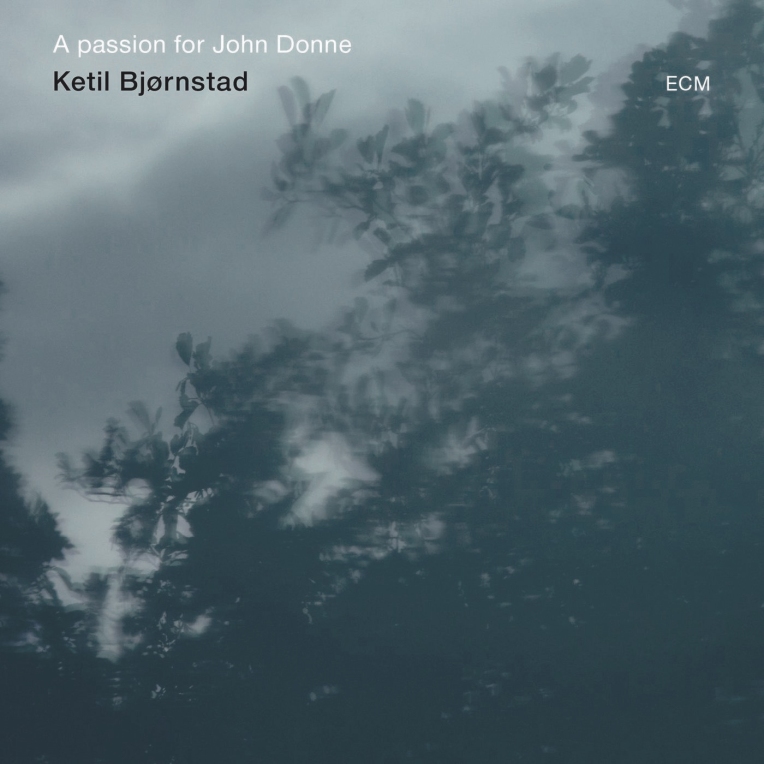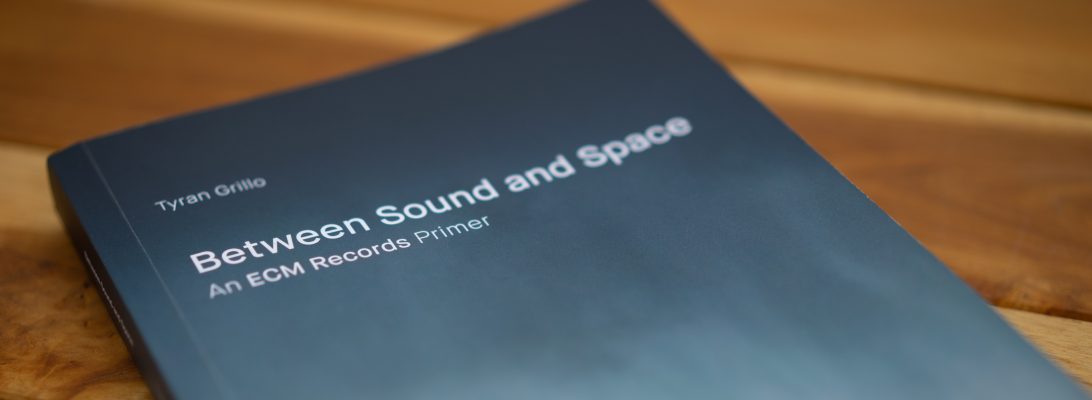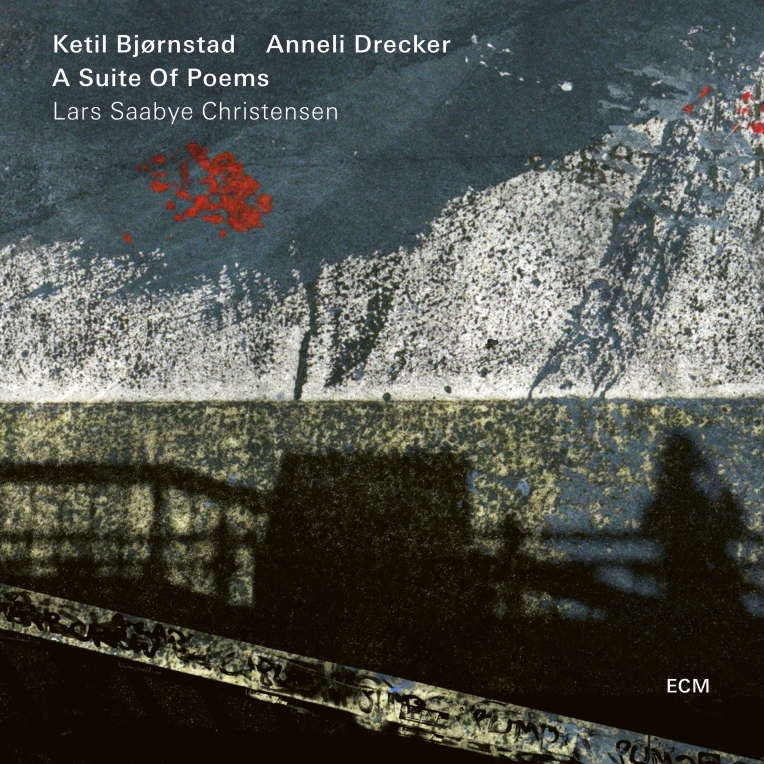
Ketil Bjørnstad
Vinding’s Music – Songs From The Alder Thicket
Ketil Bjørnstad piano
Gunilla Süssman piano
Jie Zhang piano
Norwegian Radio Orchestra
Christian Eggen conductor, piano
CD 1
Recorded December 2009, Pettersens Kolonial Lydstudio, Hønefoss, Norway
Engineer: Espen Amundsen
CD 2
Recorded March 2009, Store Studio, NRK, Oslo, Norway
Engineers: Morten Hermansen and Jan-Erik Tørmoen
Recording producer: Geoff Miles
An ECM production, in collaboration with Aschehoug and Suhrkamp
While we look not at the things which are seen, but at the things which are not seen: for the things which are seen are temporal; but the things which are not seen are eternal.
2 Corinthians 4:18
Pianist and composer Ketil Bjørnstad will be familiar to ECM listeners for his contributions to the label in many contexts, though perhaps most notably in his “Sea” duology (ECMs 1545 and 1633) with cellist David Darling, guitarist Terje Rypdal, and drummer Jon Christensen. With Vinding’s Music, he moves to the realm of the trilogy—specifically, his three-volume collection of novels that begins with To Music, continues with The River, and concludes with The Lady In The Valley. Despite being highly praised as an author in his native Norway, as of this review only To Music has been translated into English. Nevertheless, there has always been something of the written word in his craft, each phrase sculpted like a polished sentence in search of something otherwise inexpressible. The dimmer corners of the human psyche seem always to have been a primary interest of Bjørnstad, who mines his fictional genealogy for this double album of associations and impressions.
Bjørnstad’s trilogy follows the life of a young piano student, Aksel Vinding, whose experiences mirror Bjørnstad’s own as a budding musician and composer in the Oslo of the late 1960s and early 1970s. Vinding suffers the premature death of his mother, whose absence haunts him as he faces corruptions of the living, all while trying to enhance his musicianship with nourishing growth. To achieve this, he climbs through his mounting grief and regret, marking the way with music that is important to him. In March of 2009, Bjørnstad assembled those same pieces into a concert, thereby yielding this album’s second disc.
Although it is music we have heard before, it is duly inflected by the knowledge of Bjørnstad’s concept. As Christian Eggen conducts the Norwegian Radio Orchestra and plays the Adagio from Mozart’s Piano Concerto No. 23 to start, we might very well imagine Vinding himself feeding his shadow into the composer’s scintillating machine in the hopes that something between the two might result from the friction. The piano, then, ceases to be a solo instrument, for it exists only by the grace of others, known and unknown.
Gunilla Süssmann takes on the guise of Bjørnstad’s thinly veiled protagonist in an account of Debussy’s Clair de lune that is anything but. It is, rather, naked with lucidity. Süssmann also offers her take on the Adagio from Rachmaninov’s Piano Concerto No. 2 and the final movement of Beethoven’s Sonata No. 30. The former’s oceanic patterning is clearer than ever, while the latter’s epic tumult lends voice to Vinding’s own. Jie Zhang offers her renditions of Chopin’s waltzing, glorious Ballade No. 1 in g minor, 23 and the Adagio from Ravel’s Piano Concerto, which drips from her fingertips with melancholy. Fadeout comes with the prayerful solitude of Barber’s Adagio for strings.
With the aftereffects of the Oslo performance still in his mind, Bjørnstad was invited in December of that same year to try out a new recording studio and its Bechstein grand piano, where and on which he worked through latent expressions of suffering. Hence the first disc, which documents Bjørnstad’s wintry improvisations. Not only is it refreshing to hear Bjørnstad at last on his own after so many years of collaboration on ECM; it is also proof positive of the novels’ thematic connection between suffering and art. In the spontaneous gesture he captures feelings of his characters, to be sure, but more importantly of himself. This is a diary, the travelogue of a soul.
Titles are at once retrospective and inherent. Each references a line, image, or idea from the trilogy and inspires pieces as long as nearly 11 minutes (“So Far, So Hidden”) and as short as three (“Evening Voices”). There is a yearning quality to their arc, which follows Bjørnstad’s dear protagonist toward creative refuge. At the beginning of the program, grief is still a bad dream, lit beyond recognition like constellations by sunrise. As the progression becomes clearer, we find that Vinding’s memory is a storehouse of remorse and missed opportunities. He broods over major harmonies, which sound like minor blips of land on an otherwise level waterline. Conversations from the past return in that half-dream state in which the dead may live again, speaking as they once did. But these are ephemeral comforts. Indeed, the more dance-like the motif (“Promise” is one example), the more withdrawn Vinding becomes. For the most part, melodies steep themselves in those forever-unknowns of which no grieving soul can be dispossessed, leaving only the churning ocean of “Remembrance” to show for their having ever existed.
Elsewhere, as in “Outside Skoog,” Bjørnstad’s fingers move as if they were legs toward some silent rapture, whereby the body grows weaker with every step, in proportion to the heart’s resolve. Revolving arpeggios in the left hand leave the right to unhinge every window in a childhood home and let the air of adulthood flow through the empty rooms. “The Stones, The River” is likely to sound the most familiar to Bjørnstad admirers for the regularity of its breath (the recording is clear enough to capture him respiring through the keys) and its stark, hymnal quality. If optimism is anywhere, it is in the final “New Morning,” which despite its moving on touches lips to scars and inhales their moral lessons. Like stepping onto freshly harvested land, it must acknowledge the decay that feeds new growth.
This is music that sings because it must.














